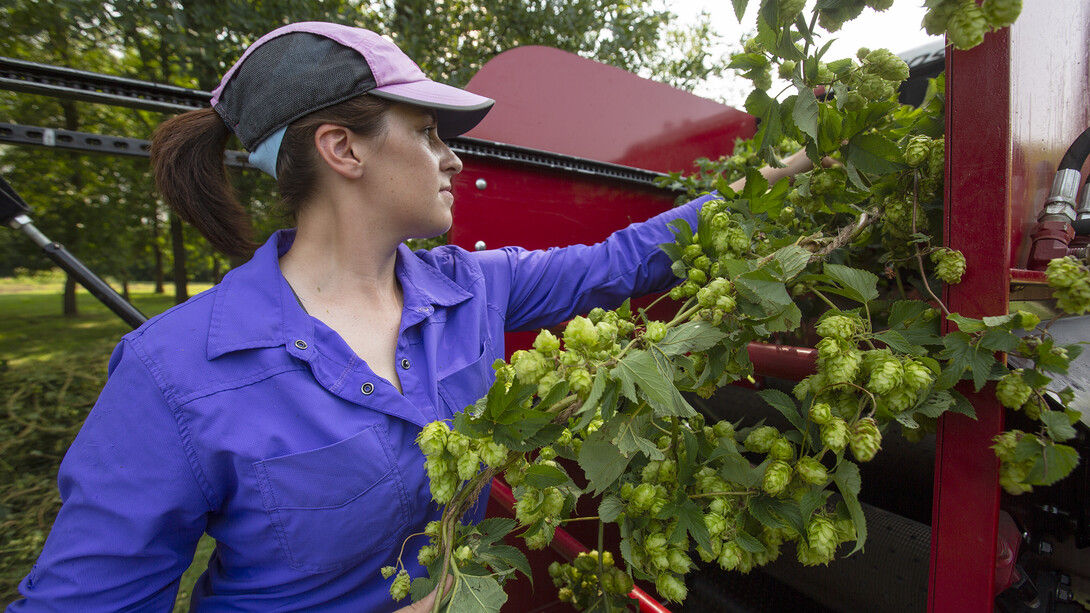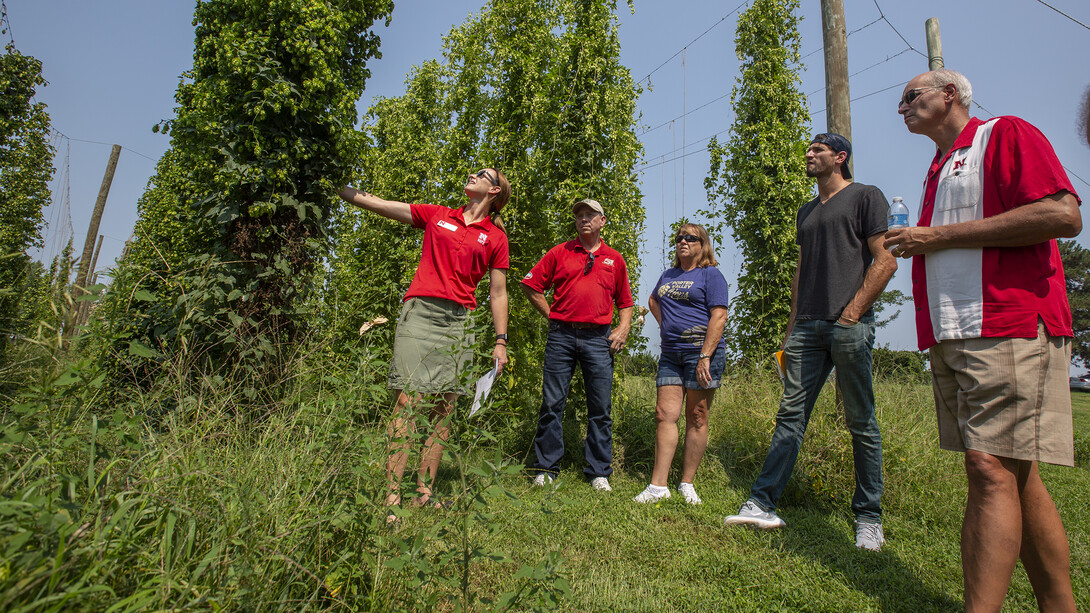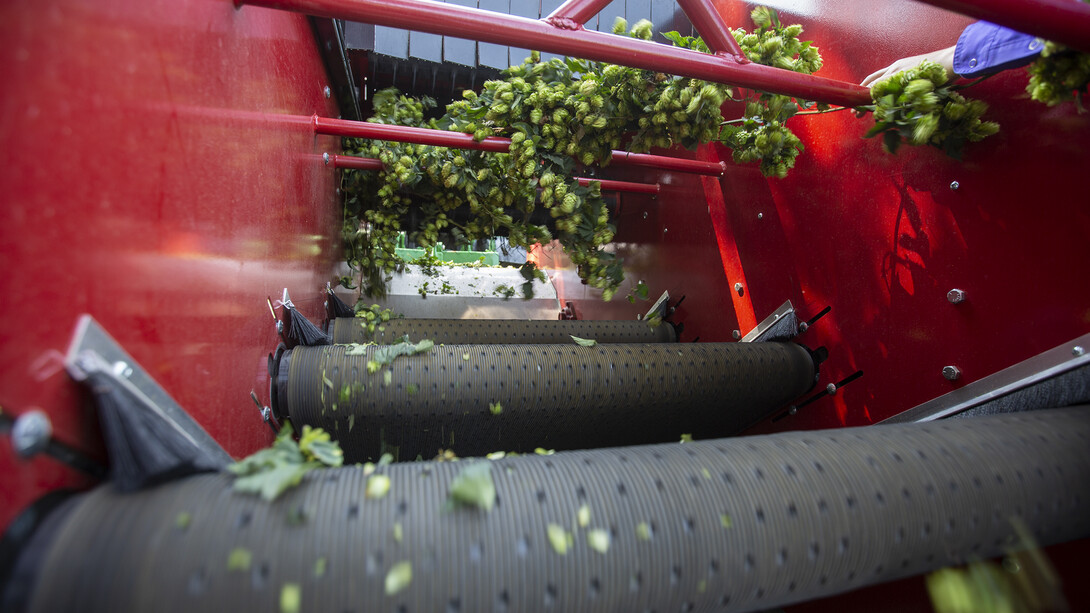
Burgeoning interest in the Cornhusker State’s craft brewing industry poured into the University of Nebraska–Lincoln’s hop yard on Aug. 24.
Tapping into a harvest demonstration organized by the university’s Nebraska Hops program, more than 20 individuals learned the basics of growing or supporting production of the pinecone-like blooms used primarily to flavor craft beer. Organized through the Department of Agronomy and Horticulture, the demonstration is a portion of the university’s support of craft brewing in Nebraska and the Midwest.

As groups toured the quarter-acre hop yard on Nebraska’s East Campus, representatives of Agri-Products, a York-based company that builds agriculture equipment, watched as university students fed hop bines into a nearby thresher.
“We’ve built a custom hops harvester that we start testing next week,” said Don Freeman, production manager for Agri-Products. “We came out today to see this one in action.”
The Agri-Products thresher is designed specifically for small growing operations of up to two acres.
“We most likely wouldn’t have developed a hops harvester without the university’s work researching hops and promoting them as an alternative crop,” said Kevin Bonin, a sales manager for Agri-Products. “For us, the UNL Hops program has been a tremendous resource.”

Hops harvested during the event were gathered from five research plots located across Nebraska. They are part of a third-year project testing the viability of growing hops as a niche revenue crop for producers. The work, funded by a grant from the Nebraska Department of Agriculture, is led by Stacy Adams, associate professor of agronomy and horticulture.
The study seeks to identify hops varieties that grow well in Nebraska, create best practices for growing the bines, and develop a Nebraska hop that combines the resiliency of wild hops with highly sought after flavors or other varieties.
Development of the wild hops is led by Keenan Amundsen, associate professor of agronomy and horticulture.

Jake and Jim Reinders attended the harvest demonstration to learn more about establishing a growing operation.
“We have five acres near Ceresco and we’re considering growing hops,” said Jim Reinders. “It’s really an interesting alternative crop. And, it’s ideal to have the university helping lead the way with education about growing hops.
“The expertise of these researchers is something we will rely on as we move forward with our project.”








